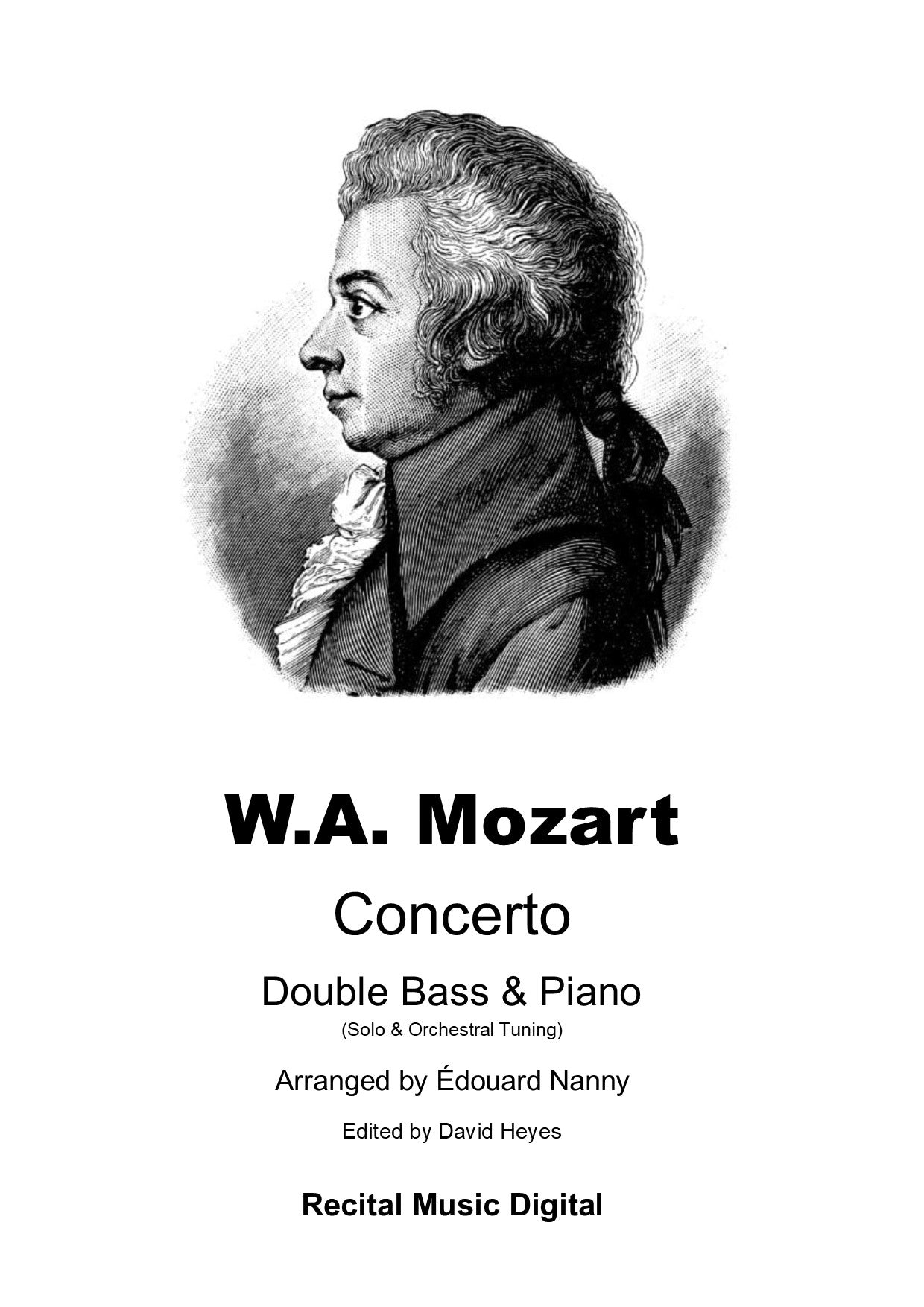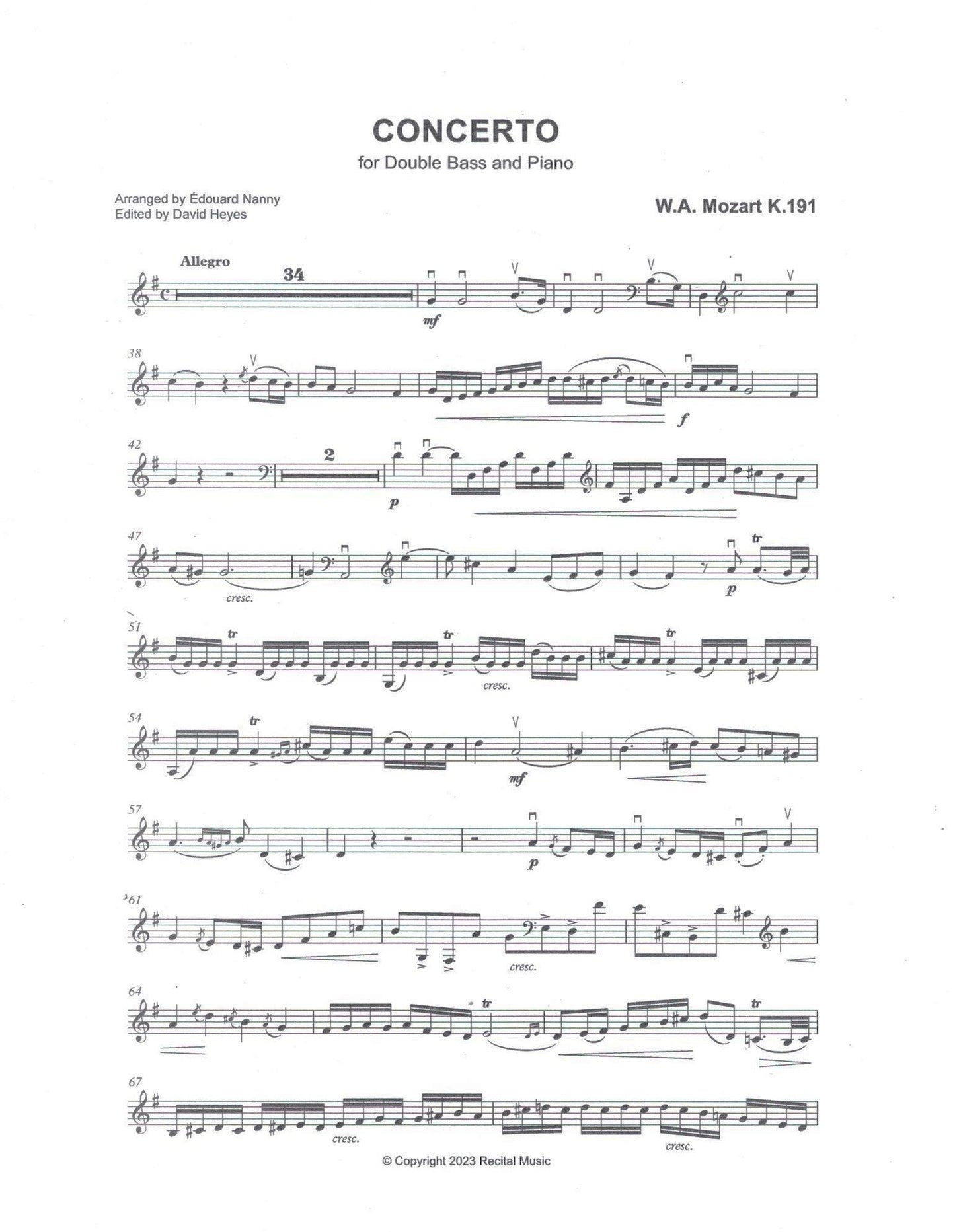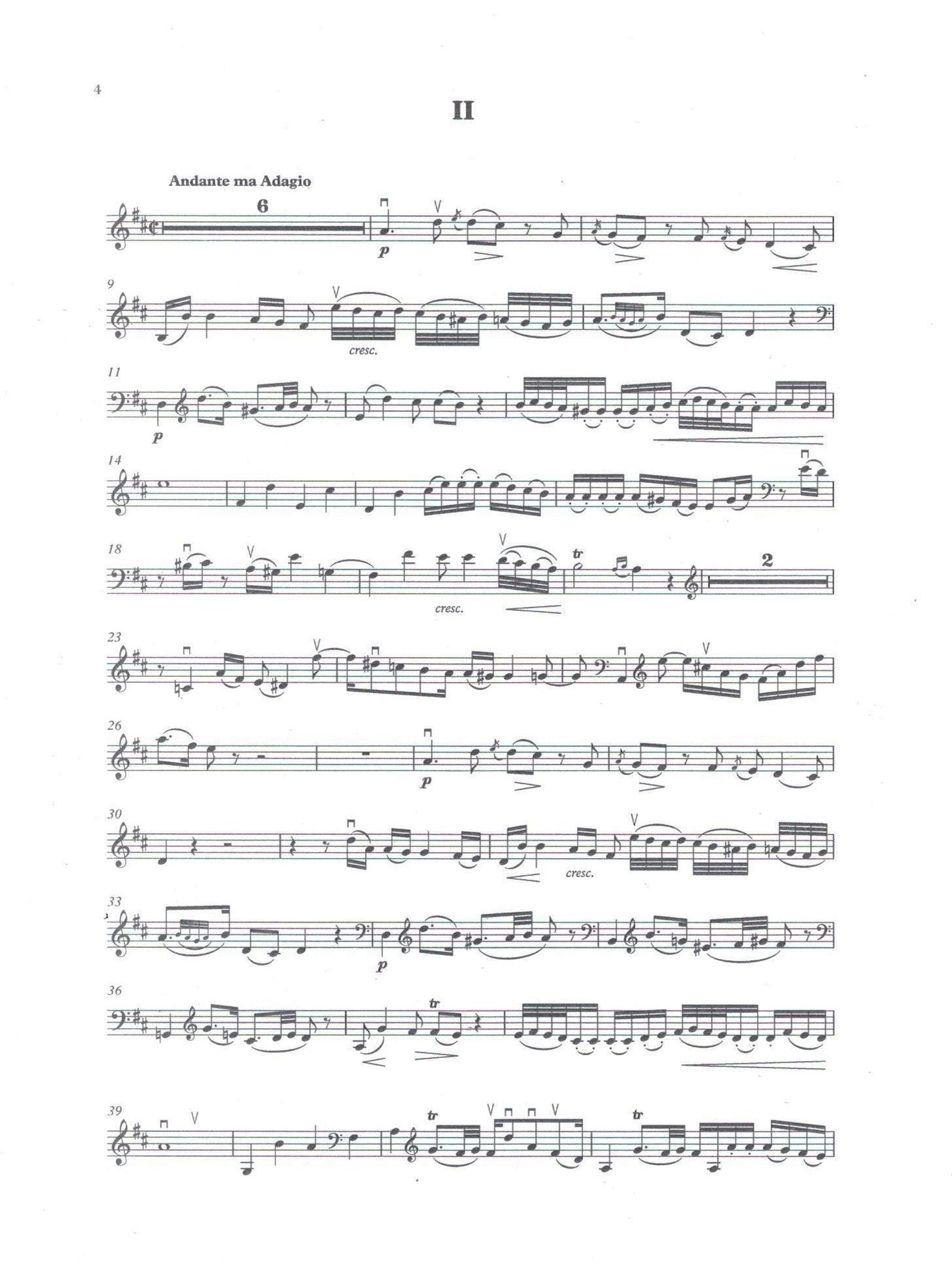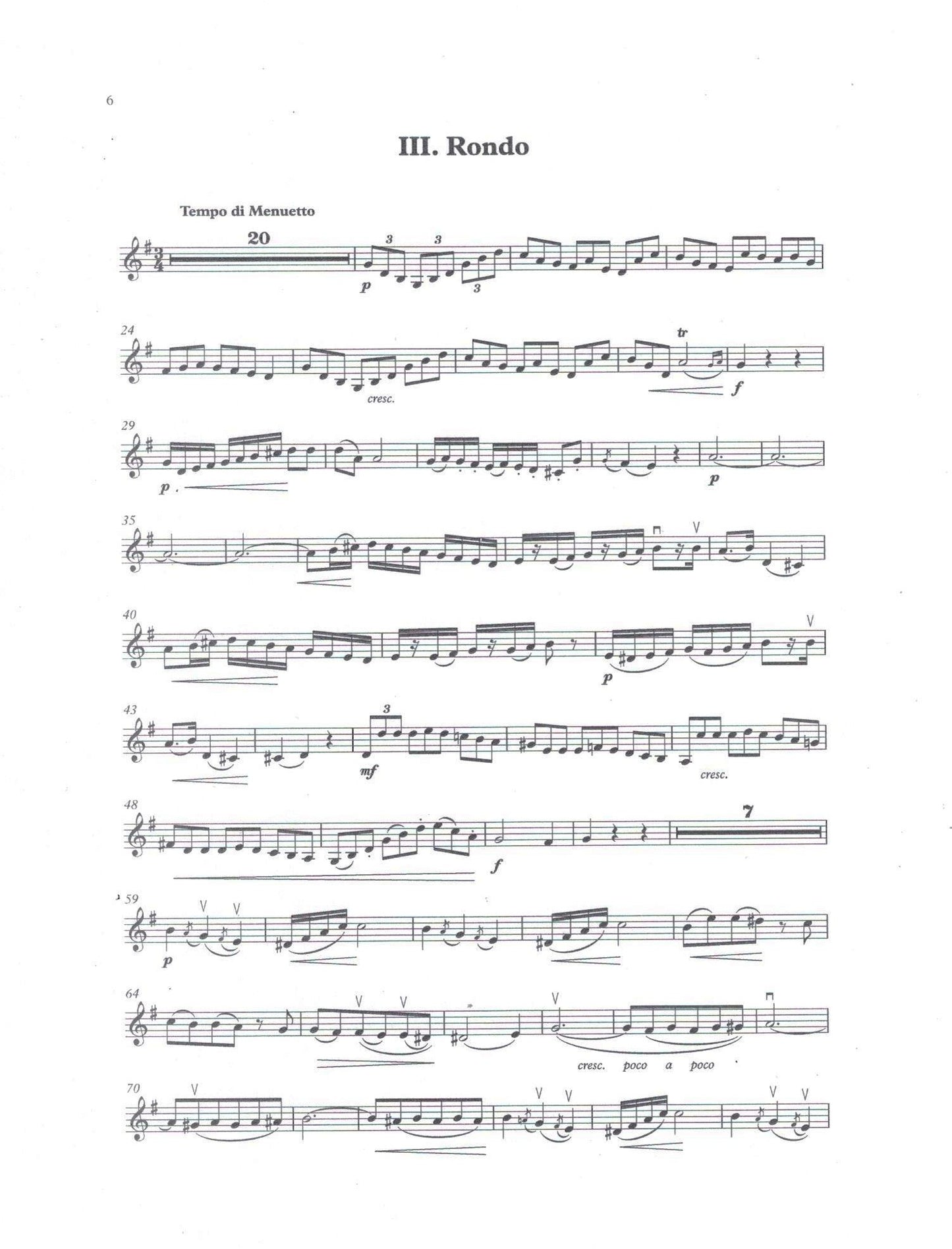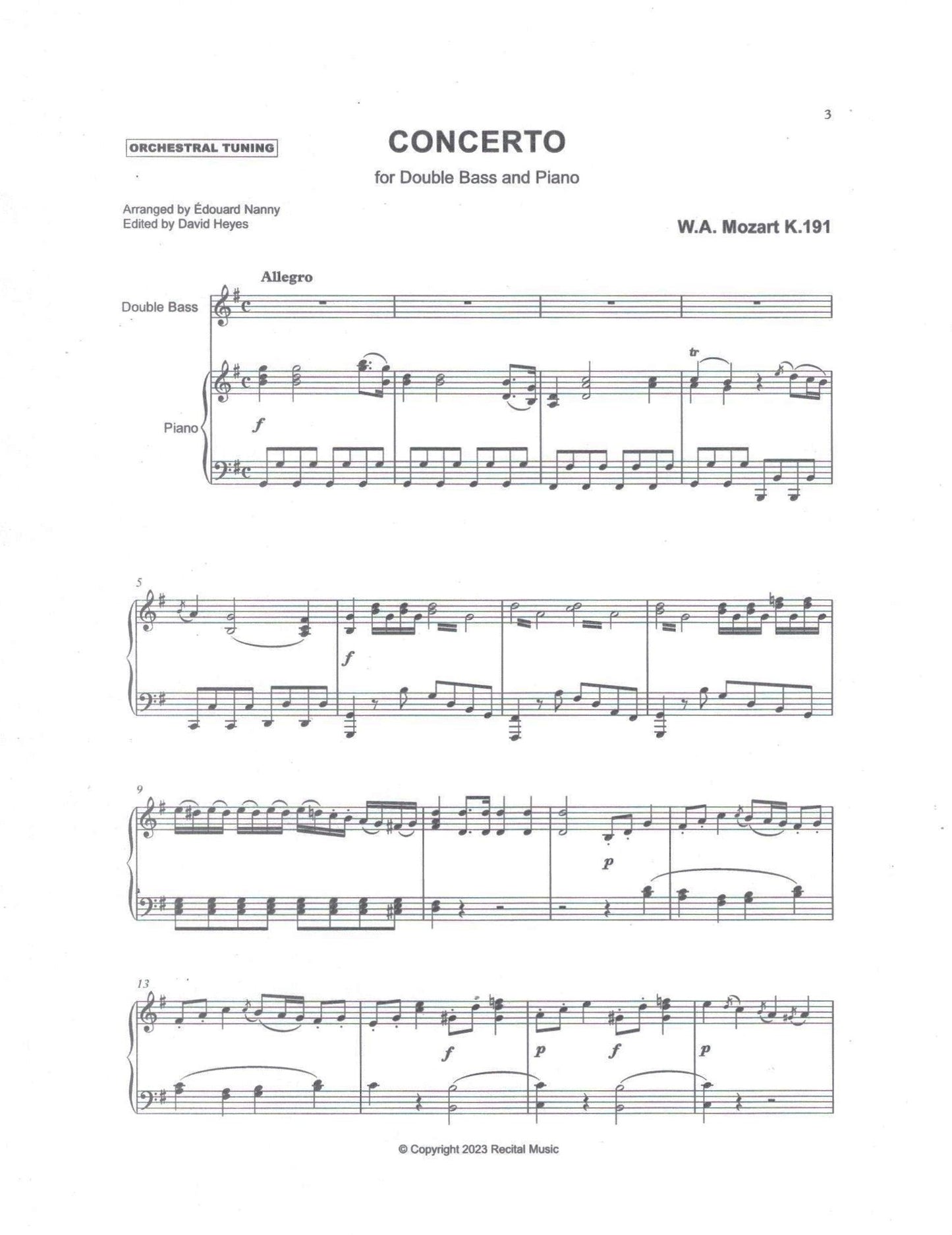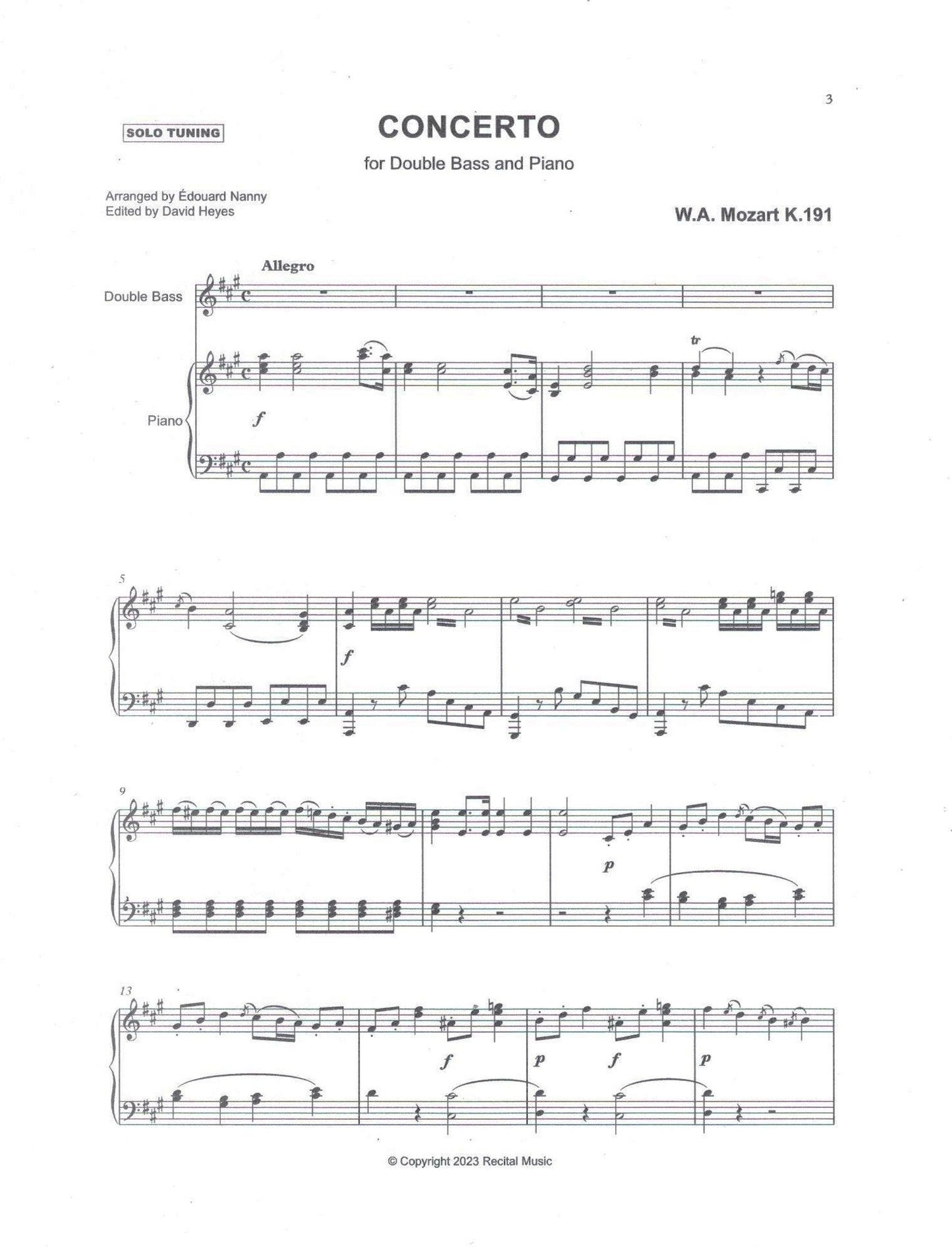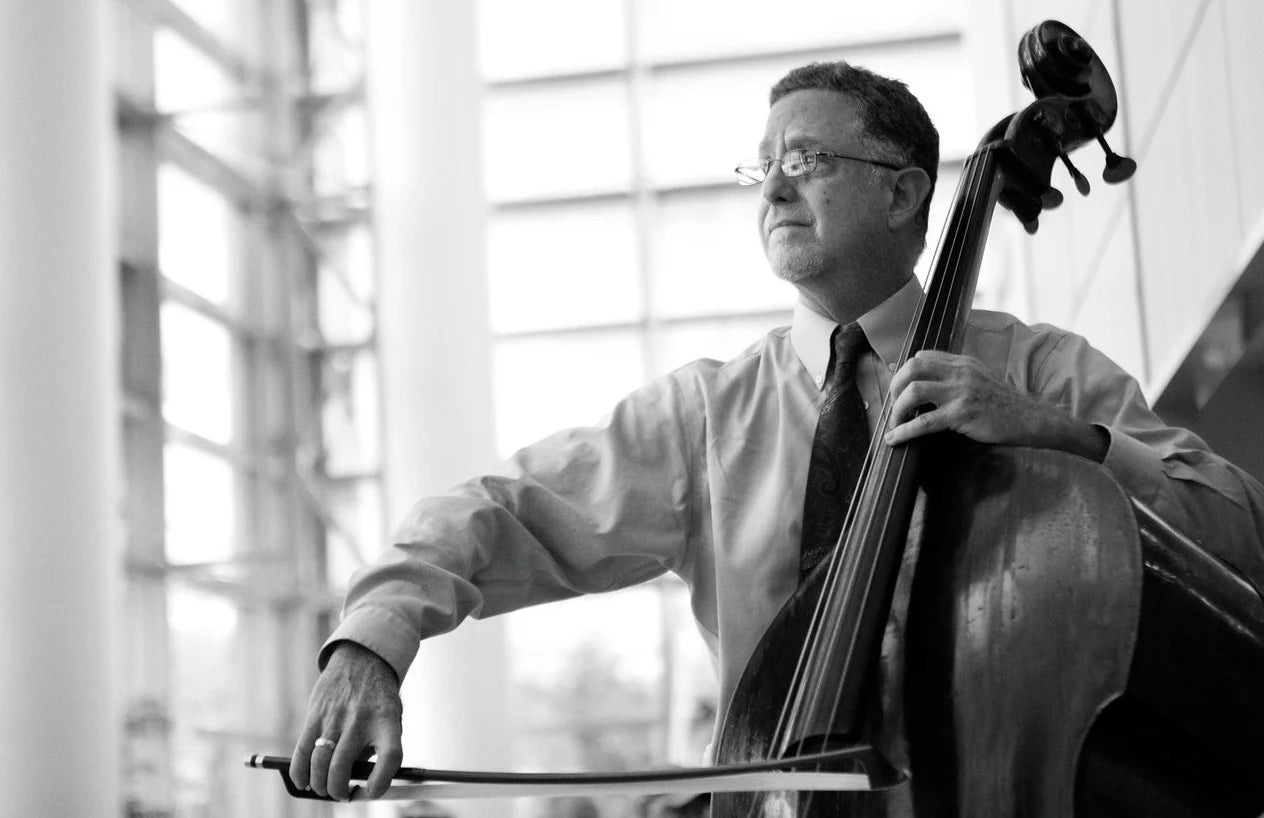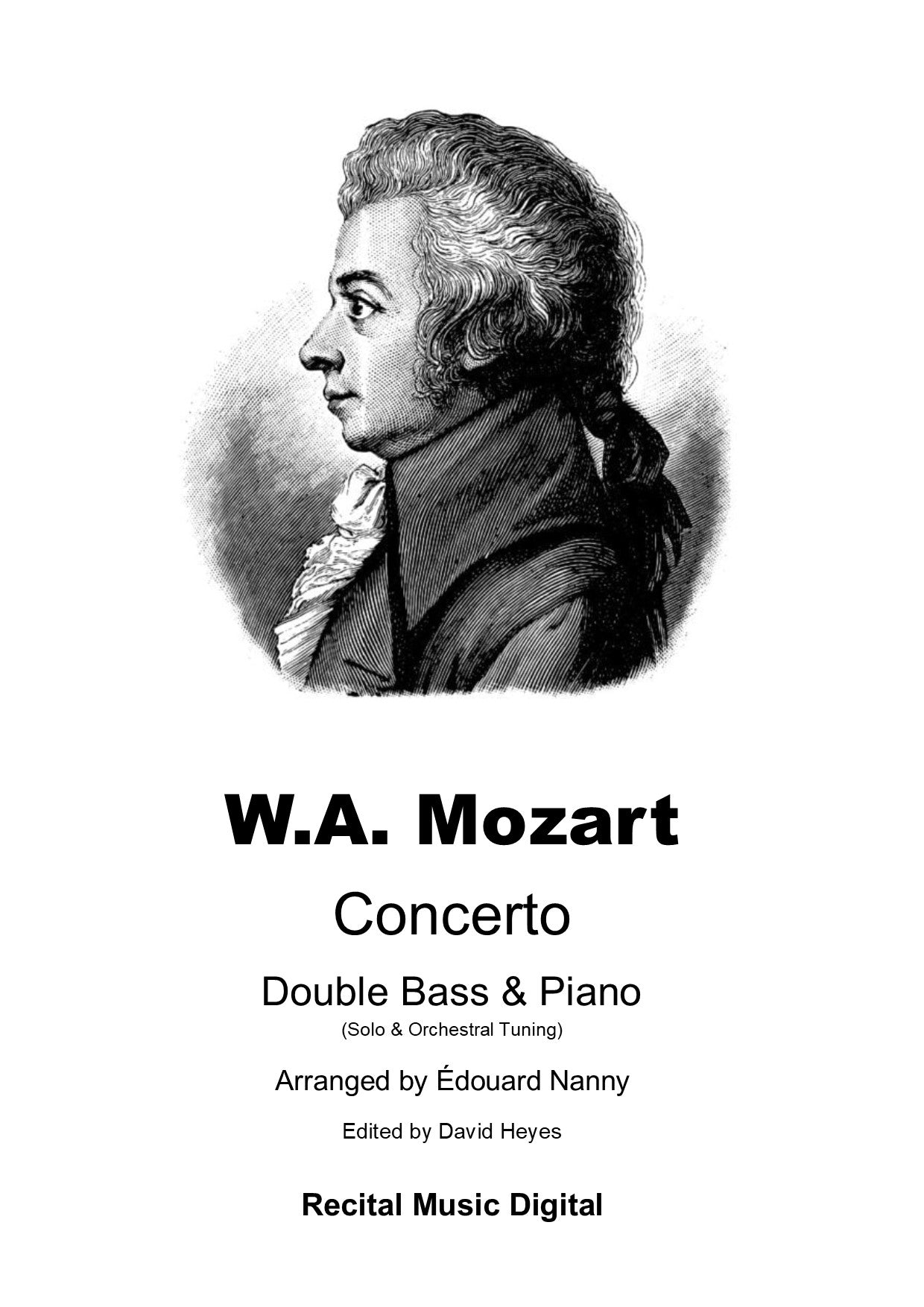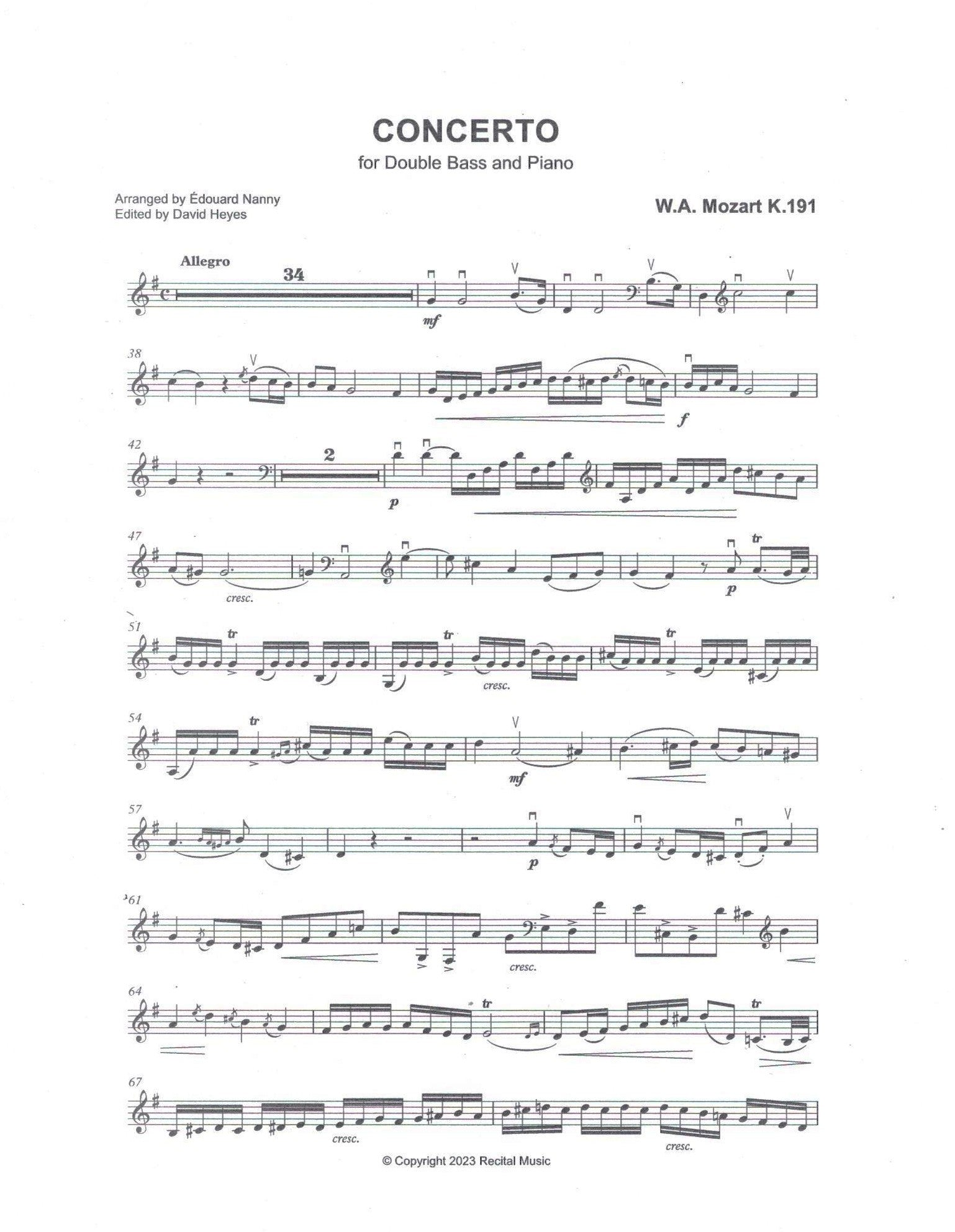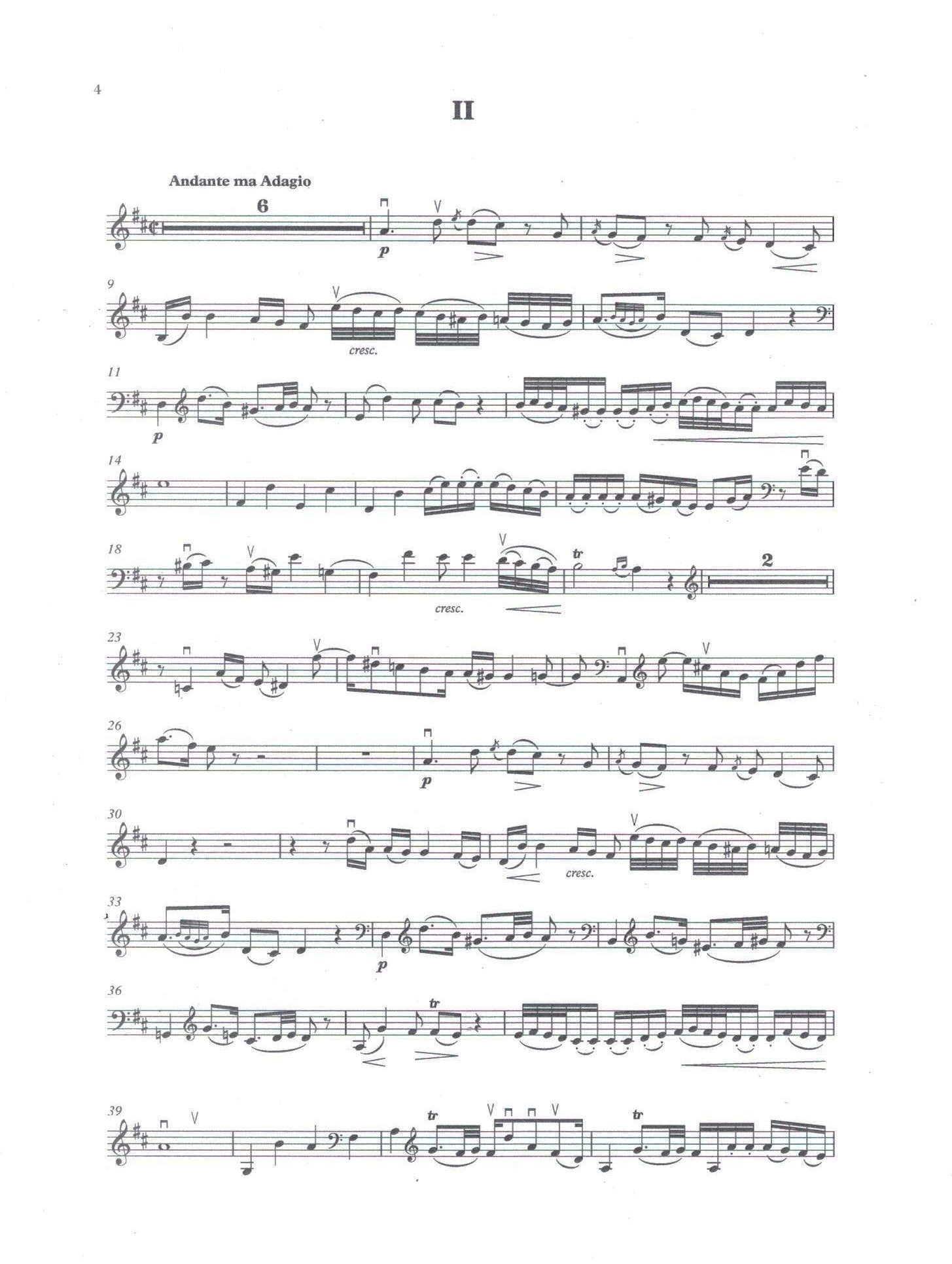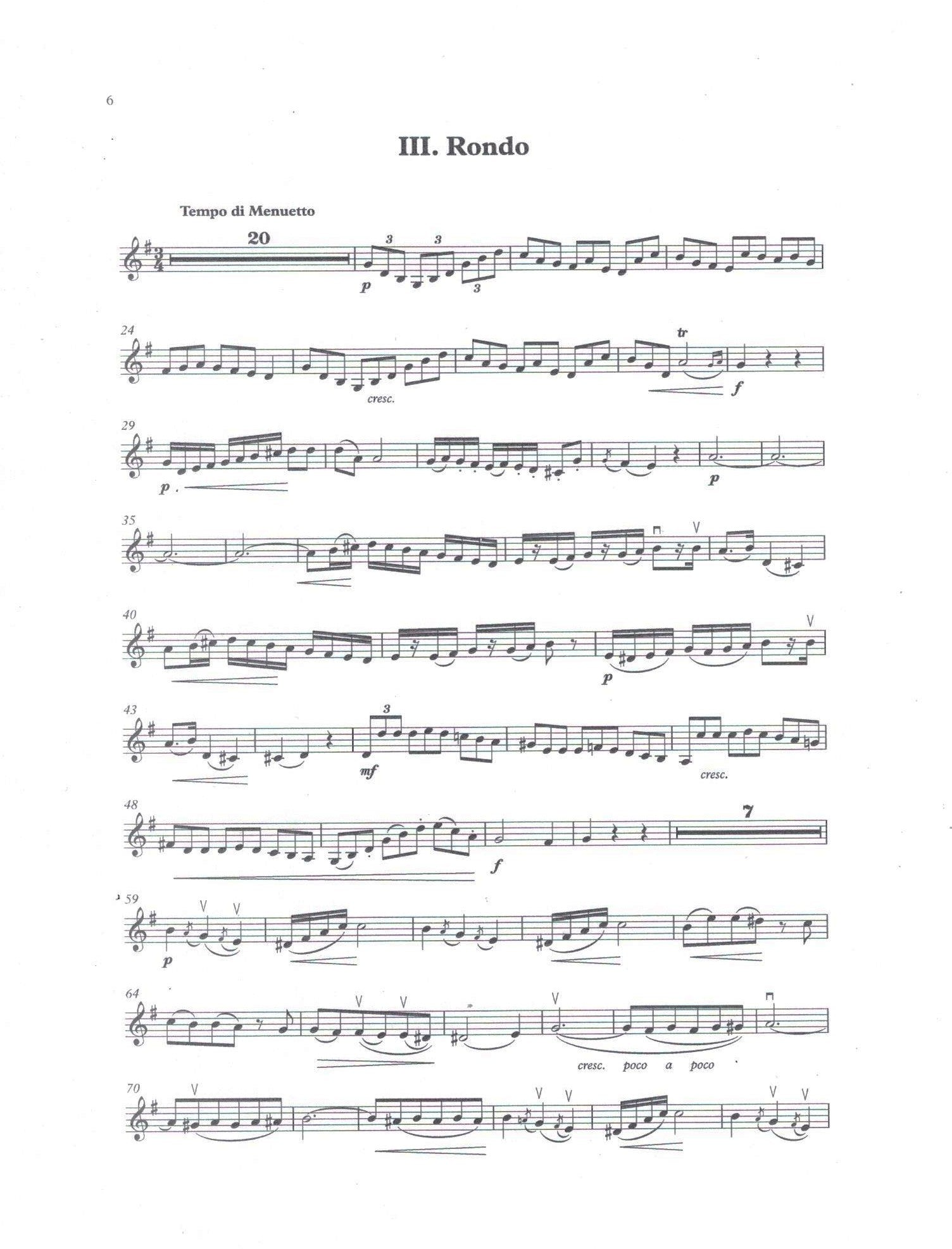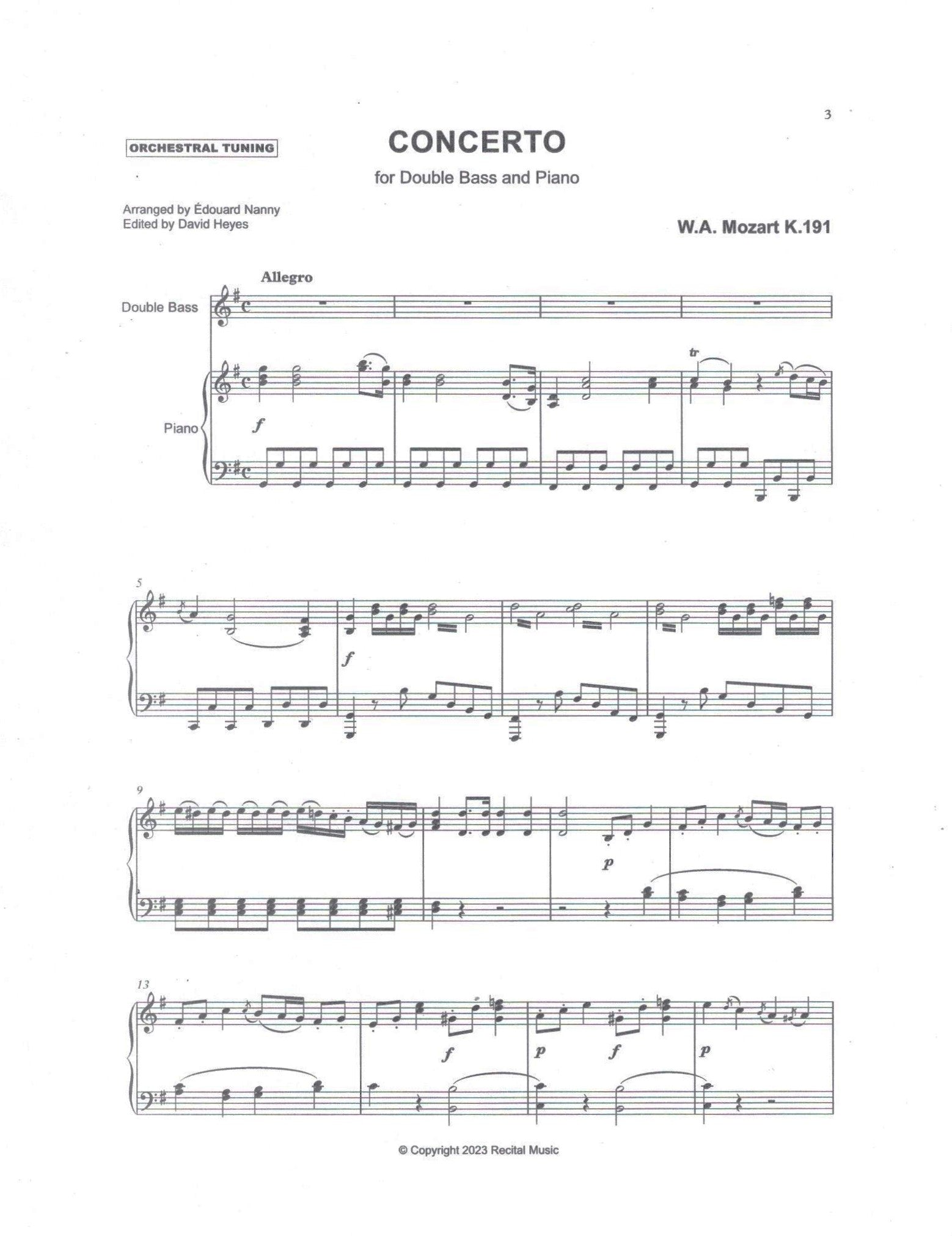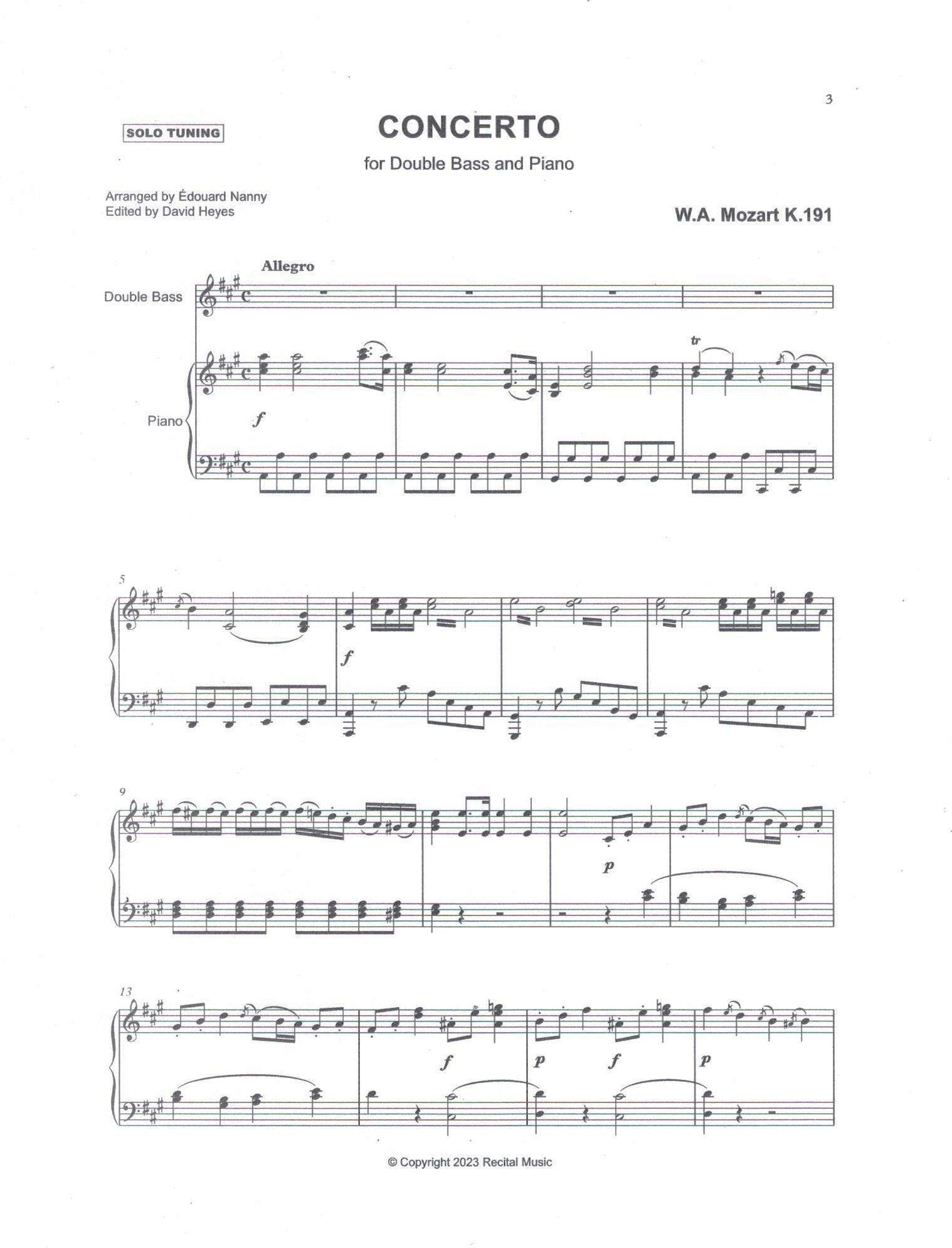David Heyes
Mozart: Concerto for double bass & piano (originally for bassoon) arr. by Édouard Nanny
Mozart: Concerto for double bass & piano (originally for bassoon) arr. by Édouard Nanny
Couldn't load pickup availability
About the Composition
Mozart's Bassoon Concerto in B flat major K.191 was completed in Salzburg on 4 June 1774, when the composer was only 18 years old. He is believed to have composed several other concertos for bassoon but this is the only one to have survived. It is contemporary with his first Piano Concerto and first Violin Concerto, composed in the mid-1770s, and is the first of his woodwind concertos, and Mozart had already composed 30 symphonies, 12 string quartets, and several operas by this time.
The Mozart family had recently returned from one of their many visits to Italy and were newly settled at the Hannibal-Platz in Salzburg in 1772 and two years before, Prince-Archbishop Colleredo confirmed Mozart's position as Konzertmeister.
For many years the Bassoon Concerto was believed to have been composed for the amateur bassoonist and wealthy patron Baron Thaddäus von Dürnitz, but it was more likely to have been composed for Heinrich Schulz or Melchior Sandmayr, bassoonists at the Salzburg court.
Scored for solo bassoon, 2 oboes, 2 horns and strings, the concerto is in three movements, and is one of the most popular and performed works in the bassoon repertoire. The contrasting movements demonstrate the many possibilities of the bassoon and Mozart composed an early masterpiece which demonstrates a thorough understanding of the instrument, even though he didn't play the instrument.
The first movement (Allegro) is the longest of the three and exploits the full range of the bassoon, as well as its ability to play wide leaps with ease and fast scale passages followed by a more expansive and lyrical slow movement (Andante ma adagio) which emphasises the bassoon's cantabile and singing qualities above an accompaniment of muted strings. The finale (Rondo: Tempo di menuetto), the shortest of the three, is lively and ebullient and full of great character and classical spirit.
Mozart's Bassoon Concerto exists in a number of versions for double bass, the main ones being by Édouard Nanny (1872-1942) and Stuart Sankey (1927-2000). Nanny's transcription dates from 1928 (Alphonse Leduc et Cie, Paris) and is transposed into A major, with the double bass part in G major for solo tuning. The solo part is written a 6th higher than the original bassoon part, but in reality, it sounds a semitone below the original key.
Nanny makes a good case for the change of key and register, and after 95 years, it is still in print. He adds fingering and bowing suggestions and writes a very evocative and beautifully written cadenza in the slow movement but nothing for the others. Nanny removes eight bars before the end of the first movement, which included space for a cadenza, and also amends the end of the last movement, but otherwise remains fairly true to the original.
Stuart Sankey's edition (IMC, 1964) is in B flat major and for double bass in orchestral tuning, presumably to make use of the existing piano accompaniment and with no added typesetting or printing costs for the publisher, apart from amending the title page and producing a solo double bass part. Sankey also adds fingerings and bowings and changes a few notes that are too low to play on a four-stringed double bass. He suggests some passages can be played in a higher register and include cadenzas in each movement, which are effective and well-written, although the one in the last movement is only two bars long.
Both editions are by respected bassists, and each offers something different to the performer - the Nanny version is more virtuosic and is in solo tuning, using the solo register predominantly, whereas the Sankey edition generally uses more of the orchestral register, although the cadenza does take the player to the higher end of the fingerboard. Both are well conceived for the double bass - the Nanny will be too high for some bassists and the Sankey too low for others. The choice is yours...
[David Heyes / 10 July 2018]
Arranged by Édouard Nanny. Newly edited by David Heyes.
